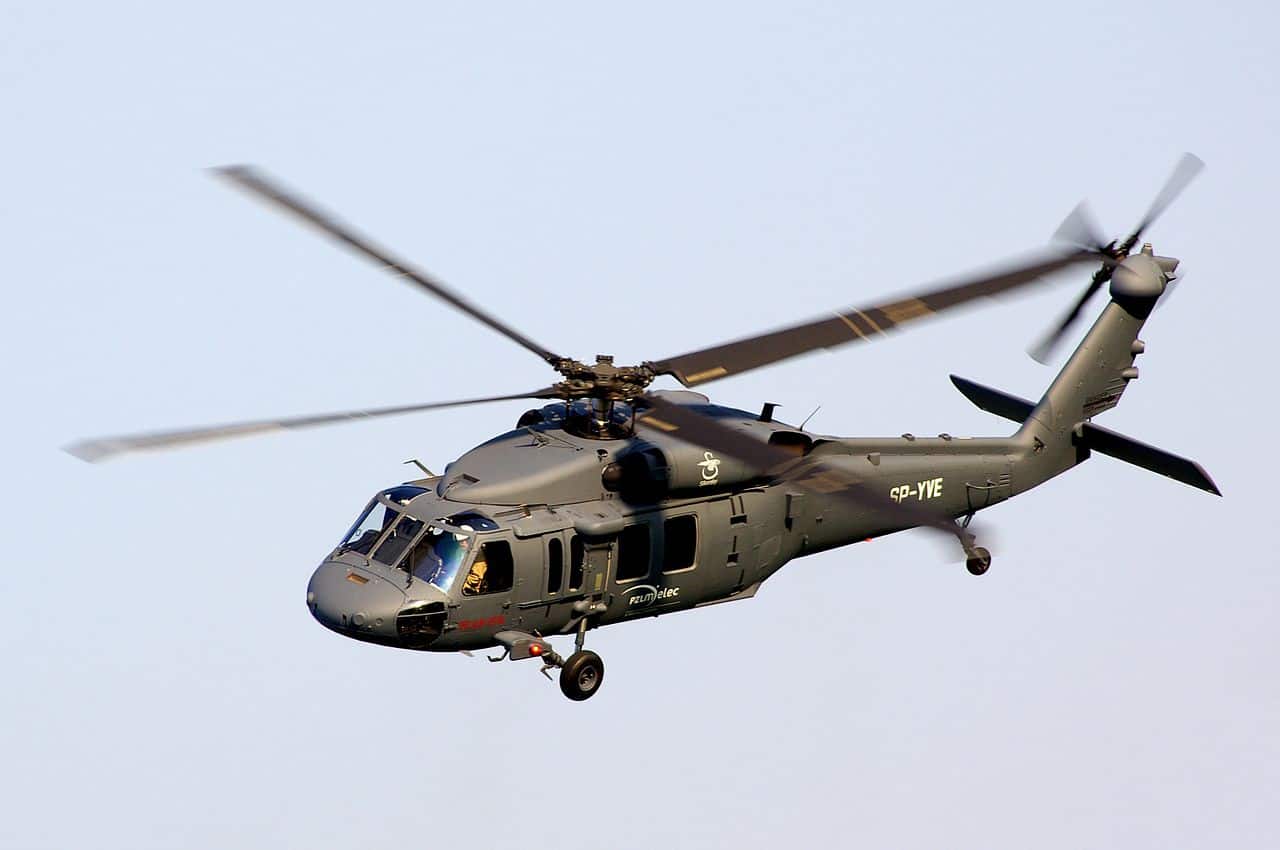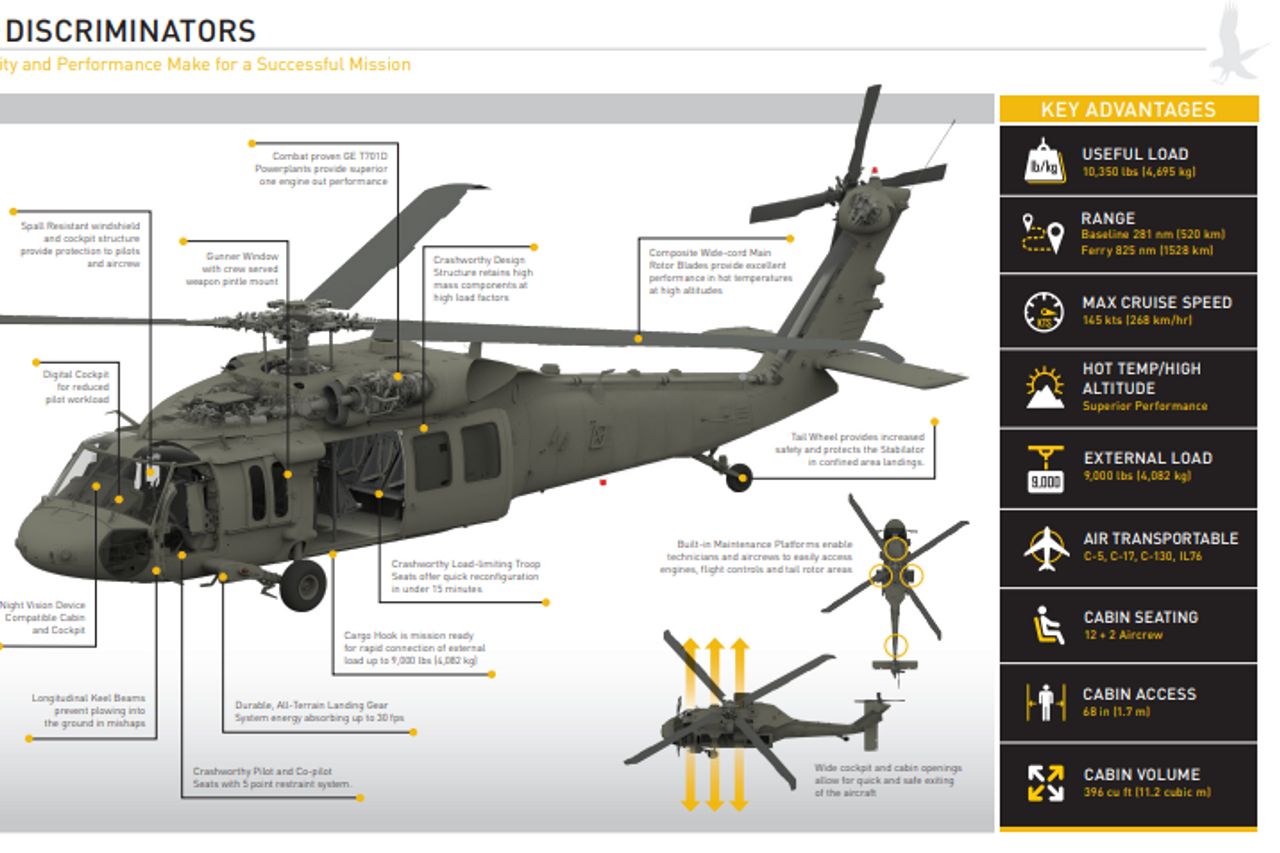How the Sikorsky S 70 Stands Apart in the Helicopter Sector
High-Performance Multi-Role Rotorcraft Featuring Advanced Cabin Technologies and Integrated Sensing Unit Solutions
The world of rotorcraft innovation has actually seen remarkable improvements in current times, especially in the world of high-performance multi-role rotorcraft furnished with cutting-edge cockpit technologies and effortlessly integrated sensing unit systems. In the following conversation, we will certainly discover the development of rotorcraft technology, delve into the realm of innovative cabin advancements, and examine the effects of integrated sensor systems on the operational adaptability and performance of modern-day rotorcraft.
Development of Rotorcraft Technology
The evolution of rotorcraft technology has been marked by significant innovations in aerodynamics, materials, and propulsion systems, shaping the capabilities and efficiency of contemporary rotorcraft. Furthermore, advancements in propulsion systems, including much more powerful engines and ingenious propulsion innovations, have enabled rotorcraft to achieve higher altitudes, faster speeds, and better payloads.
These innovations have not just changed the abilities of rotorcraft but have also increased their applications throughout various markets, including army, business, and emergency solutions. The continual evolution of rotorcraft technology proceeds to drive innovation in the field, pressing the borders of what is feasible and forming the future of upright trip.
Advanced Cabin Innovations
Structure upon the foundational advancements in aerodynamics, products, and propulsion systems, the world of rotorcraft technology now moves emphasis in the direction of introducing Advanced Cockpit Innovations. The assimilation of sophisticated innovations within the cockpit environment plays a critical role in improving the functional capacities, safety and security, and efficiency of modern-day rotorcraft. sikorsky s 70. Advanced Cabin Innovations incorporate a vast range of functions designed to give pilots with improved situational recognition, streamlined data monitoring, and user-friendly control interfaces
One of the key developments in cabin design is the implementation of glass cockpits, which change typical analog determines with high-resolution screens. These electronic systems provide customizable formats, real-time information combination, and enhanced readability, enabling pilots to accessibility vital info at a glance. Advanced avionics systems, such as fly-by-wire controls and increased truth displays, are revolutionizing how pilots communicate with the aircraft, allowing for specific control and improved decision-making capabilities.


Integrating innovative cabin advancements not just boosts pilot performance but additionally adds to general objective performance and safety and security in intricate functional settings. By leveraging advanced technologies within the cockpit, rotorcraft makers are establishing brand-new requirements for operational quality and mission success.
Integrated Sensor Equipments
With the development of rotorcraft technology, the combination of advanced Integrated Sensing unit Solution has actually ended up being vital in boosting functional efficiency and safety and security. These Integrated Sensing unit Equipments encompass a large selection of modern technologies that provide vital information for numerous functions such as navigating, monitoring, targeting, and ecological surveillance. By flawlessly integrating sensing units like radars, cameras, lidar, and infrared systems into rotorcraft, drivers can profit from improved situational understanding, boosted goal capacities, and lowered pilot workload.
One key advantage of Integrated Sensor Equipments is their capability to collect real-time data and provide actionable understandings to pilots and objective drivers. As an example, progressed radar systems can find and track targets over cross countries, enabling for early threat detection and effective action preparation. In addition, integrating electro-optical and infrared video cameras allows rotorcraft to perform reconnaissance and monitoring missions with precision and precision.
Fundamentally, the integration of advanced sensing unit modern technologies into rotorcraft not only enhances operational performance however additionally contributes considerably to total objective success and crew safety and security. As rotorcraft proceed to advance, the role of Integrated Sensor Systems will unquestionably stay at the center of technology in the aerospace market.
Operational Flexibility and Performance
Enhancing operational adaptability and effectiveness in rotorcraft is an all-natural progression from the combination of innovative Integrated Sensor Equipments. By leveraging the understandings and information given by these sophisticated sensing unit systems, rotorcraft can maximize their performance throughout different missions and settings.
Functional convenience incorporates the capacity of rotorcraft to adapt to various roles and scenarios effectively. With sophisticated Check This Out cabin modern technologies and incorporated sensing unit systems, rotorcraft can seamlessly transition between tasks such as search and rescue, clinical emptying, monitoring, and extra. This flexibility boosts the rotorcraft's ability to meet diverse operational requirements without requiring extensive reconfiguration.
Efficiency in rotorcraft operations is important for taking full advantage of objective performance and resource utilization. Integrated sensing unit systems play a critical duty in enhancing operational performance by offering real-time data on weather condition problems, terrain mapping, target tracking, and more. This information enables pilots to make informed choices swiftly, enhance flight courses, preserve gas, and enhance general goal performance.
Effect On Modern Aeronautics Workflow

In addition, the integration of sophisticated sensing units helps with improved goal planning and implementation, allowing rotorcraft to execute a vast array of tasks with enhanced accuracy. From search and rescue operations to airborne firefighting and police objectives, the capabilities of contemporary rotorcraft geared up with innovative cabin technologies and incorporated sensor systems are unmatched.
Furthermore, the impact of these advancements extends beyond operational efficiency to cost-effectiveness and sustainability. By optimizing trip courses, fuel usage, and upkeep schedules, high-performance rotorcraft equipped with innovative cockpit technologies and sensors add to minimizing functional costs and environmental effect, making them indispensable properties in modern aviation operations.
Verdict
Finally, the high-performance multi-role rotorcraft with sophisticated cabin modern technologies and incorporated sensing unit systems stands for a significant advancement in aviation modern technology. These innovations improve functional versatility and performance, inevitably affecting contemporary air travel procedures in a favorable means. The integration of these innovative technologies permits boosted capacities and performance in different goal situations, showcasing the continued advancement of rotorcraft technology in the aviation market.
The world of rotorcraft innovation has actually seen notable innovations in check out here current times, especially in the realm of high-performance multi-role rotorcraft furnished with advanced cockpit technologies and perfectly incorporated sensing unit systems. From enhanced goal versatility to boosted functional efficiency, the merging of sophisticated cockpit modern technologies and integrated sensor systems has actually ushered in a brand-new era of opportunities for rotorcraft applications. In the adhering to conversation, we will certainly check out the development of rotorcraft innovation, dive right into the world of innovative cabin innovations, and examine the implications of incorporated sensing unit systems on the operational flexibility and efficiency of modern-day rotorcraft.
